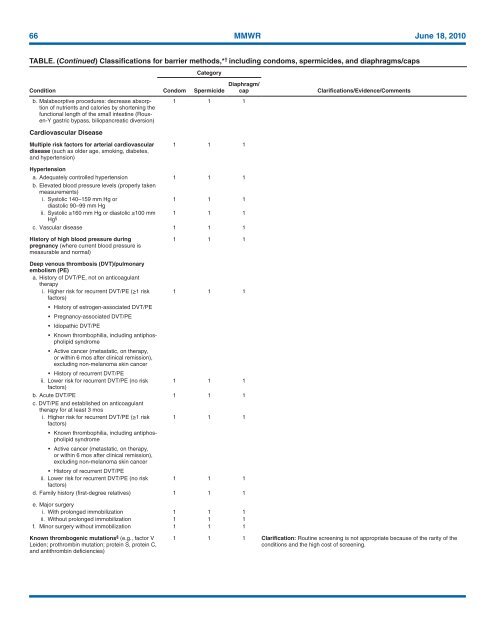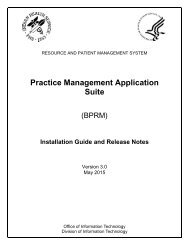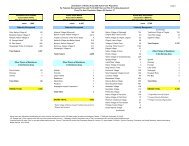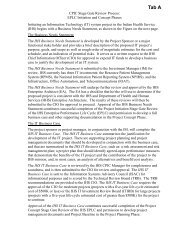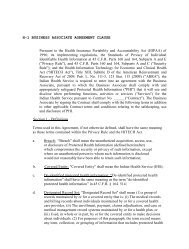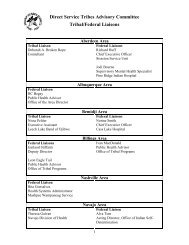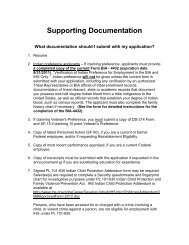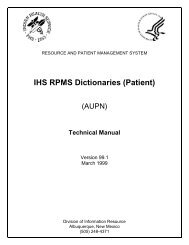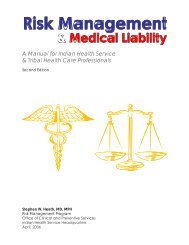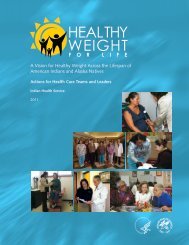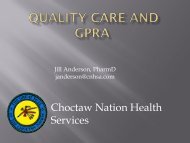CDC Article-US Medical Eligibility Criteria for Contraceptive Use, 2010
CDC Article-US Medical Eligibility Criteria for Contraceptive Use, 2010
CDC Article-US Medical Eligibility Criteria for Contraceptive Use, 2010
Create successful ePaper yourself
Turn your PDF publications into a flip-book with our unique Google optimized e-Paper software.
66 MMWR June 18, <strong>2010</strong><br />
TABLE. (Continued) Classifications <strong>for</strong> barrier methods,* † including condoms, spermicides, and diaphragms/caps<br />
Category<br />
Condition<br />
b. Malabsorptive procedures: decrease absorption<br />
of nutrients and calories by shortening the<br />
functional length of the small intestine (Rouxen-Y<br />
gastric bypass, biliopancreatic diversion)<br />
Cardiovascular Disease<br />
Multiple risk factors <strong>for</strong> arterial cardiovascular<br />
disease (such as older age, smoking, diabetes,<br />
and hypertension)<br />
Condom<br />
Spermicide<br />
Diaphragm/<br />
cap<br />
1 1 1<br />
1 1 1<br />
Clarifications/Evidence/Comments<br />
Hypertension<br />
a. Adequately controlled hypertension 1 1 1<br />
b. Elevated blood pressure levels (properly taken<br />
measurements)<br />
i. Systolic 140–159 mm Hg or<br />
1 1 1<br />
diastolic 90–99 mm Hg<br />
ii. Systolic ≥160 mm Hg or diastolic ≥100 mm 1 1 1<br />
Hg §<br />
c. Vascular disease 1 1 1<br />
History of high blood pressure during<br />
pregnancy (where current blood pressure is<br />
measurable and normal)<br />
1 1 1<br />
Deep venous thrombosis (DVT)/pulmonary<br />
embolism (PE)<br />
a. History of DVT/PE, not on anticoagulant<br />
therapy<br />
i. Higher risk <strong>for</strong> recurrent DVT/PE (≥1 risk 1 1 1<br />
factors)<br />
• History of estrogen-associated DVT/PE<br />
• Pregnancy-associated DVT/PE<br />
• Idiopathic DVT/PE<br />
• Known thrombophilia, including antiphospholipid<br />
syndrome<br />
• Active cancer (metastatic, on therapy,<br />
or within 6 mos after clinical remission),<br />
excluding non-melanoma skin cancer<br />
• History of recurrent DVT/PE<br />
ii. Lower risk <strong>for</strong> recurrent DVT/PE (no risk 1 1 1<br />
factors)<br />
b. Acute DVT/PE 1 1 1<br />
c. DVT/PE and established on anticoagulant<br />
therapy <strong>for</strong> at least 3 mos<br />
i. Higher risk <strong>for</strong> recurrent DVT/PE (≥1 risk 1 1 1<br />
factors)<br />
• Known thrombophilia, including antiphospholipid<br />
syndrome<br />
• Active cancer (metastatic, on therapy,<br />
or within 6 mos after clinical remission),<br />
excluding non-melanoma skin cancer<br />
• History of recurrent DVT/PE<br />
ii. Lower risk <strong>for</strong> recurrent DVT/PE (no risk 1 1 1<br />
factors)<br />
d. Family history (first-degree relatives) 1 1 1<br />
e. Major surgery<br />
i. With prolonged immobilization 1 1 1<br />
ii. Without prolonged immobilization 1 1 1<br />
f. Minor surgery without immobilization 1 1 1<br />
Known thrombogenic mutations § (e.g., factor V<br />
Leiden; prothrombin mutation; protein S, protein C,<br />
and antithrombin deficiencies)<br />
1 1 1 Clarification: Routine screening is not appropriate because of the rarity of the<br />
conditions and the high cost of screening.


